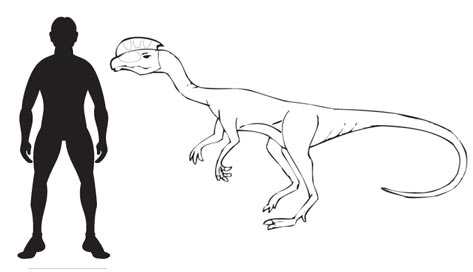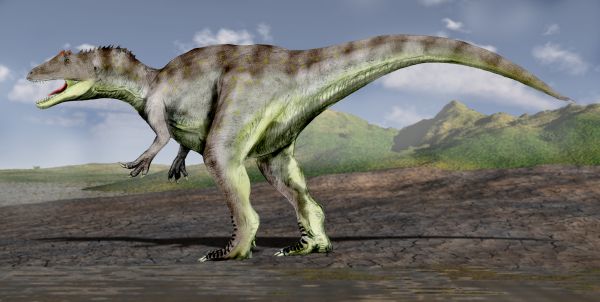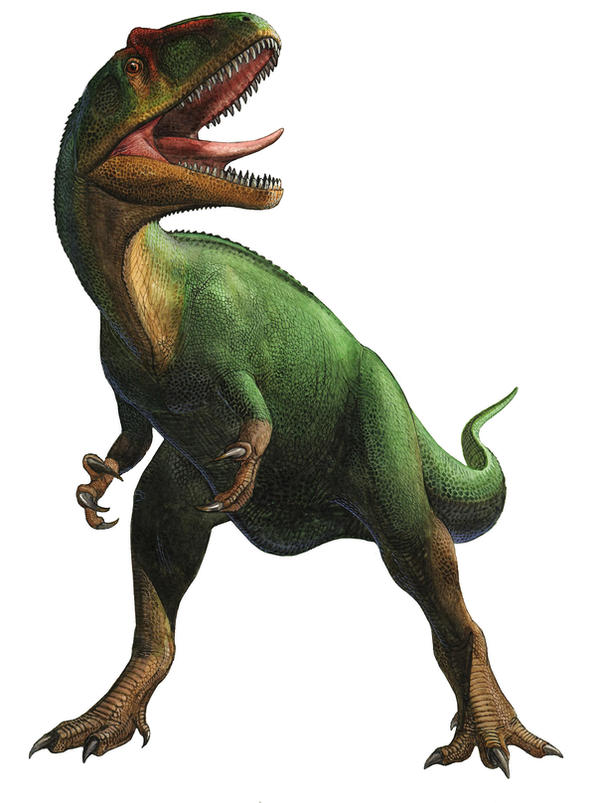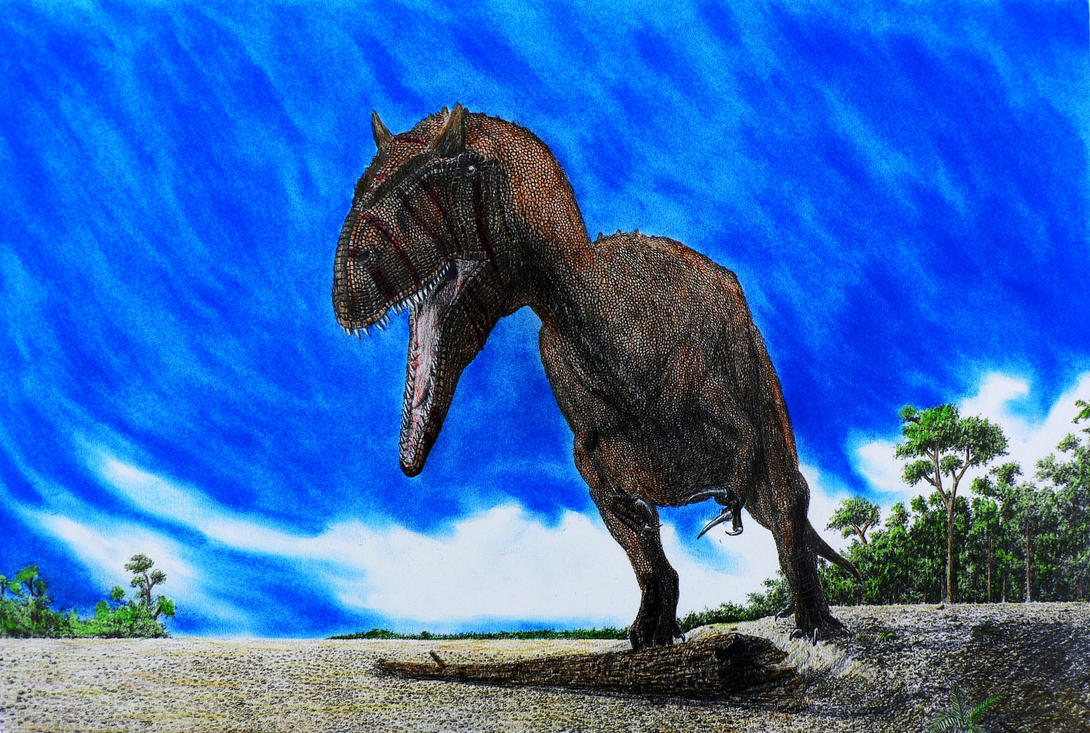[Recent Entries][Archive][Friends][User Info]
December 16th, 2012
| December 16th, 2012 | |
|---|---|
| 06:20 pm [industrialterro] [Link] |
Sarcosaurus Sarcosaurus (meaning "flesh lizard") is a genus of theropod dinosaur, either a coelophysoid or a basal ceratosaur, roughly 3.5 meters long. It lived during the Sinemurian stage of the Early Jurassic, about 194 million years ago. Fossils of Sarcosaurus were found in the Lower Lias of England. The type species, Sarcosaurus woodi, was first described by Charles William Andrews in 1921 shortly after a partial skeleton had been found by S.L. Wood near Barrow-on-Soar. The generic name is derived from Greek sarx, "flesh". The specific name honours Wood. The holotype, BMNH 4840/1, consists of a pelvis, a vertebra and the upper part of a femur. The preserved length of the femur is 31.5 centimetres. A second species, Sarcosaurus andrewsi, was named by Friedrich von Huene in 1932, based on a 445 millimetres long tibia, BMNH R3542, described by Arthur Smith Woodward in 1908 and found near Wilmcote. Confusingly von Huene in the same publication named the very same fossil Magnosaurus woodwardi. Later he made a choice for S. andrewsi to be the valid name. In 1974 S. andrewsi was reclassified as Megalosaurus andrewsi by Michael Waldman, on the probably erroneous assumption it was a megalosaurid. A later study concluded the two species to be indistinguishable except for size, but other authors consider any identity to be unprovable as there are no comparable remains and conclude both species to lack autapomorphies and therefore to be nomina dubia. Von Huene in 1932 referred a partial skeleton from the collection of the Warwick Museum to S. woodi but the identity is unproven; in 1995 it was given the generic name "Liassaurus" but this has remained a nomen nudum. Andrews originally assigned Sarcosaurus to the Megalosauridae. The first to suggest a more basal position was Samuel Paul Welles who placed it in the Coelophysidae. Later analyses resulted in either a position in the Ceratosauria, or in the Coelophysoidea.
Репродукции (1, 2):
Размеры тела в сравнении с человеком:
Tags: Вымершие рептилии, Юра, авеметатарзалии, архозавроморфы, архозавры, диапсиды, динозавроморфы, динозавры, тероподы, ящеротазовые |
| Time | Event |
| 07:22 pm [industrialterro] [Link] |
Saurophaganax Заурофаганакс («Великий пожиратель пресмыкающихся») — род ящеротазовых динозавров из семейства аллозавридов, обитавший в конце юрского периода на территории Соединённых Штатов. Родовое название происходит от греческих слов σαυρος (ящерица) и θαγεν (есть, кушать). Соединение эти слов имеет смысл «пожиратель ящериц». В 1931 и 1932 годах Джон Уиллис Стовалл обнаружил останки большого теропода вблизи Кентона, Симаррон Каунти, штат Оклахома. В 1941 году они были названы Saurophagus Maximus. В 1950 году Стовалл описал свои находки. В 1995 году Дон Чур дал динозавру имя Saurophaganax maximus. В 1998 году Дэвид К. Смит вновь проанализировал строение животного. В результате он пришёл к выводу, что заурофаганакс - особенно крупный вид рода Allosaurus. Заурофаганакс имел длину до 13 м и вес до 4 тонн. При таких размерах этот хищник был крупнее аллозавра и торвозавра, то есть заурофаганакс является высшим хищником позднеюрской Северной Америки. Различие между аллозавром и заурофаганаксом заключаются в размерах, а также в форме шеи и позвонков. Saurophaganax ("lizard-eating master") is a genus of allosaurid dinosaur from the Morrison Formation of Late Jurassic Oklahoma (latest Kimmeridgian age, about 151 million years ago). Some paleontologists consider it to be a species of Allosaurus (A. maximus). Saurophaganax represents a very large Morrison allosaurid characterized by horizontal laminae at the bases of the dorsal neural spines above the transverse processes, and "meat-chopper" chevrons. The maximum size of S. maximus has been estimated at anywhere from 10.5 metres (34 ft) to 13 m (43 ft) in length, and around 3 tonnes (3.0 long tons; 3.3 short tons) in weight. Saurophaganax is the official state fossil of Oklahoma, and a large skeleton of Saurophaganax can be seen in the Jurassic hall in the Sam Noble Oklahoma Museum of Natural History. Although the best known Saurophaganax material was found in the panhandle of Oklahoma, possible Saurophaganax material, NMMNH P-26083, a partial skeleton including a femur, several tail vertebrae, and a hip bone, has been found in northern New Mexico. The identification of Saurophaganax is a matter of dispute. It has been described as its own genus, or as a species of Allosaurus: Allosaurus maximus. The most recent review of basal tetanurans accepted Saurophaganax as a distinct genus. New possible Saurophaganax material from New Mexico may clear up the status of the genus. Saurophaganax was one of the largest carnivores of Late Jurassic North America. Ray even gave an estimate of the body length of fifteen metres and Chure of fourteen, though later estimations have been lower. The fossils known of Saurophaganax (both the possible New Mexican material and the Oklahoma material) are known from the latest part of the Morrison formation, suggesting that they were either always uncommon or appeared rather late in the fossil record. Saurophaganax was large for an allosaurid, and bigger than both its contemporaries Torvosaurus tanneri and Allosaurus fragilis. Being much rarer than its contemporaries, making up one percent or less of the Morrison theropod fauna, not much about its behavior is known. Stovall in Oklahoma also unearthed a considerable number of Apatosaurus specimens, a possible prey for a large theropod. О заурофаганаксе мы можем судить всего по нескольким костям, извлеченным из земли в 30-х годах XX века, причем серьезное исследование проводилось только в 90-е годы. Оказалось, что он очень похож на аллозавра, но гораздо крупнее его по размерам. После того как Дон Чур дал динозавру имя в 1995 году, Дэвид К. Смит вновь проанализировал строение животного в 1998 году и пришел к выводу, что он представляет собой особенно крупный вид аллозавра. Описание аллозавра можно с таким же успехом применить и к заурофаганаксу, настолько эти животные близки друг к другу. Различия заключаются только в размерах заурофаганакса, а также в форме шеи и позвонков. Полностью собранный скелет заурофаганакса выставлен в музее Сэма Ноубла в Оклахома-Сити, но большинство его костей - это муляжи, скопированные в увеличенном масштабе с аллозавра из карьера Кливленд-Ллойд.
Репродукции (1, 2, 3, 4, 5, 6, 7, 8, 9):
( Read More ) Размеры тела в сравнении с человеком:
Tags: Вымершие рептилии, Юра, авеметатарзалии, аллозавриды, архозавроморфы, архозавры, диапсиды, динозавроморфы, динозавры, карнозавры, тероподы, ящеротазовые |
| Previous Day | 2012/12/16 [Archive] |
Next Day |











